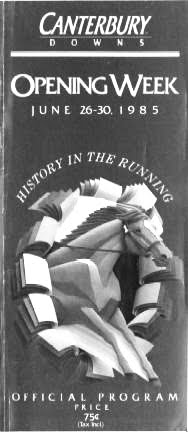The cars were lined up bumper to bumper at entrances to the track two hours before post-time. Steel-gray skies threatened to dampen spirits throughout the afternoon, but bowed to the authority of the minstrels strolling the racetrack grounds while serenading newcomers to this ancient sport of kings.
It was busy, confusing, aggravating, exhausting and absolutely delightful. The date was Wednesday, June 26, 1985 and pari-mutuel racing had arrived in Minnesota, more specifically at Canterbury Downs in Shakopee _ three days early. A masterful construction and engineering plan by Kraus-Anderson in conjunction with a smooth relationship with labor unions got the job done in an incredible year’s time.
Dignitaries and politicians from around the state showed up to stamp their imprimaturs on the new sport and the shiny new facility, Governor Rudy Perpich among them.
Ron Uchman of Chicago, who would later become a public handicapper for the Minneapolis-Star Tribune, was taken with the splendor of the new facility. “It was so unique. I couldn’t imagine a track so beautiful rising right out of a cornfield,” he said. “Everything was fresh and clean and everybody thought they were going to get rich.”
A crowd of 15,079 thought they might and wagered $867,827 _ mildly disappointing management who hoped to surpass a million bucks _ while keeping mutuel clerks swamped and pressed _ stiffer than a starched shirt.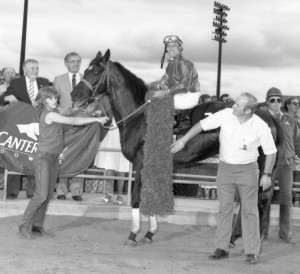
What took place on the racetrack that afternoon was worthy of a Hollywood script:
In the first pari-mutuel race on Minnesota soil, an English-bred horse named Faiz came up a winner, prompting an emotional response from rider Marty Hamilton. “When they put that blanket of roses on us afterward it felt just like winning the Kentucky Derby.”
Hamilton never tasted the tangy mint julep of America’s most famous race, but his point was well taken.
The best came later, in the Inaugural Stakes when Patch of Sun and My Earl went eyeball-to-eyeball and ended in a dead heat, a truly thrilling finish to the state’s first added money event.
The press box erupted. A young tip-sheet 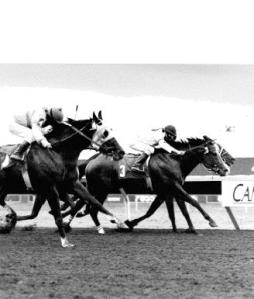 master who called himself Minnesota Mike informed the local press that they now had their story. His name was Mike Riley, he weighed all of 100 pounds after a heavy rainstorm, chain-smoked like a steam engine and could analyze a race as finely as Albert Einstein did a physics problem.
master who called himself Minnesota Mike informed the local press that they now had their story. His name was Mike Riley, he weighed all of 100 pounds after a heavy rainstorm, chain-smoked like a steam engine and could analyze a race as finely as Albert Einstein did a physics problem.
In that same pressbox was handicapper Tom Pritchard, whose failing eyesight prevented him from driving a car but not from watching, betting and pontificating on a horse race. Another tipster, recently arrived from Chicago, paraded the same premises that first week proclaiming how the newly opened track was a candy store, easy pickings for a man of his insight. But once the five-horse fields opening week gave way to fuller lineups, the candy disappeared.
A fellow named Dark Star _ his namesake the longshot winner of the 1953 Kentucky Derby _ patrolled the premises, creating hijinks of various kinds in addition to general havoc in the pressbox.
A pressbox statistician named Red Clayton, who would later become renown for praying in the bathroom before big races, kept all of the news hounds supplied with charts from the races in addition to other requested facts.
Jim Dunleavy, who called the charts and wrote for the Daily Racing Form, recalled the scene as a truly special time. 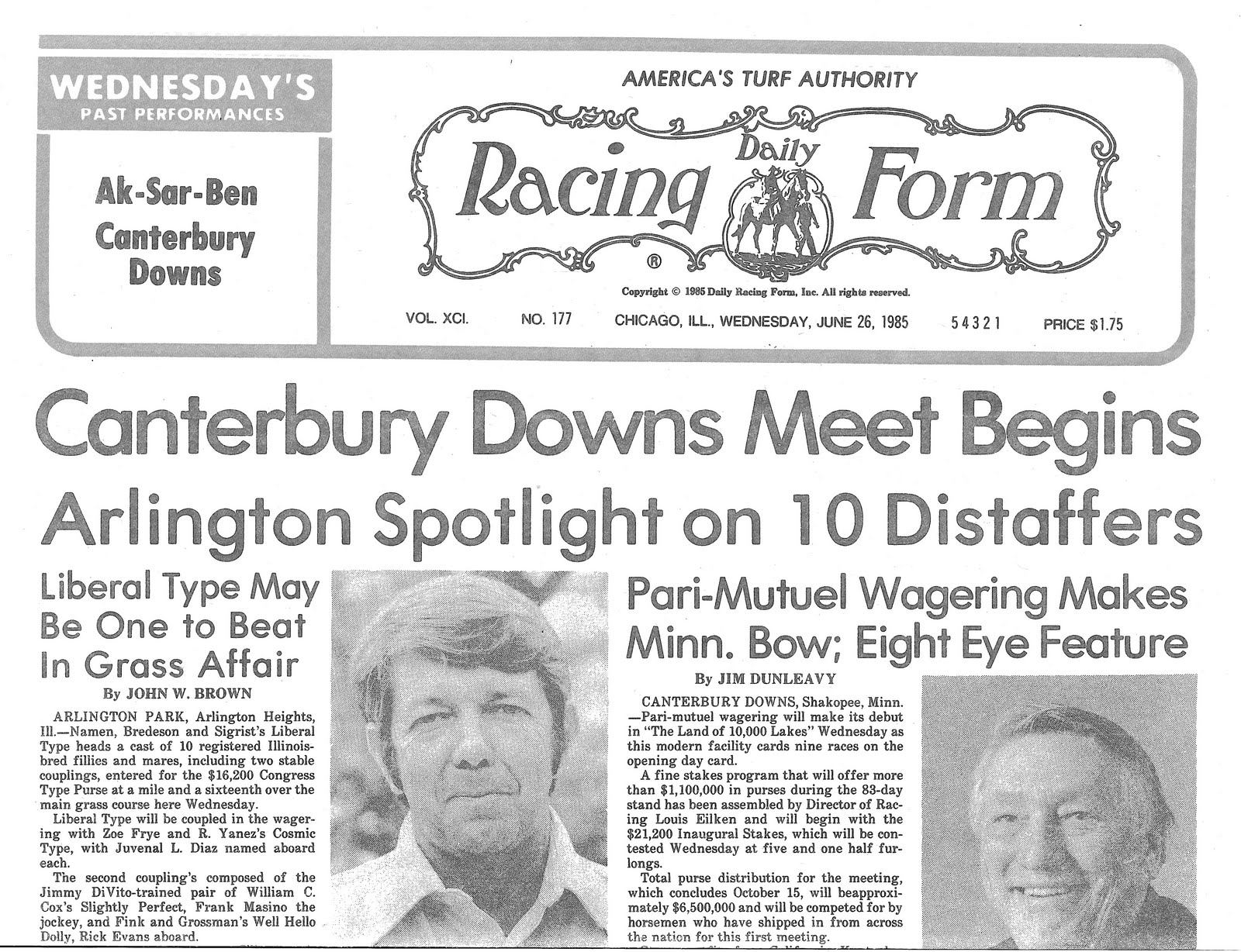
He arrived well before opening day with construction still ongoing and hard hats everywhere _ a scene of mass confusion. “Then, they opened the gates on opening day and there was lots of enthusiasm. It was very invigorating, not like an old racetrack with jaded people. It was a very positive experience,” Dunleavy recalled. “There was lots of enthusiasm and a feeling that we were part of something special.”
Nat Wess, assistant general manager at the time, doesn’t recall much from opening day in 1985. “Just that there were wall-to-wall people.” However, he does have in his home file an uncashed ticket from a race in which he invested $2 on every horse to ensure himself a winner on the f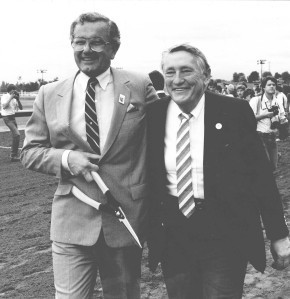 irst day of racing in Minnesota.
irst day of racing in Minnesota.
Pat Dawson, the track’s director of marketing, was at the finish line to cut the ribbon with track president Brooks Fields, Santa Anita president Robert Strub and the Minnesota governor. They then proceeded to an enclosure at the front of the grandstand. “It was the last time a Democrat has been in the winner’s circle,” Dawson said recently.
General manager Stan Bowker prepared for opening day with what he called “the great flush” two days earlier. In the final meeting with employees before opening, he sent them to every sink and toilet in the building for a simultaneous flush to test the water pressure and pipes. “There were no major problems, just a couple of minor leaks,” he said.
Two days later, pari-mutuel racing in Minnesota got under way with an even bigger whoooosh….
